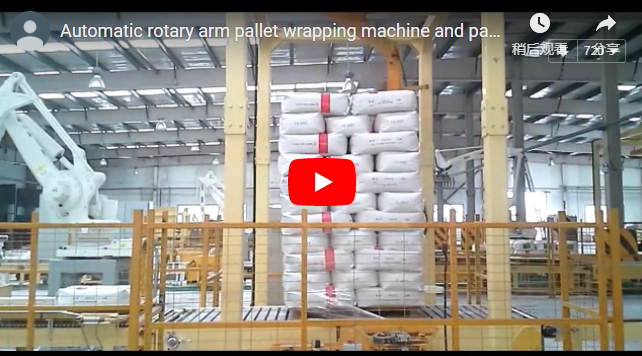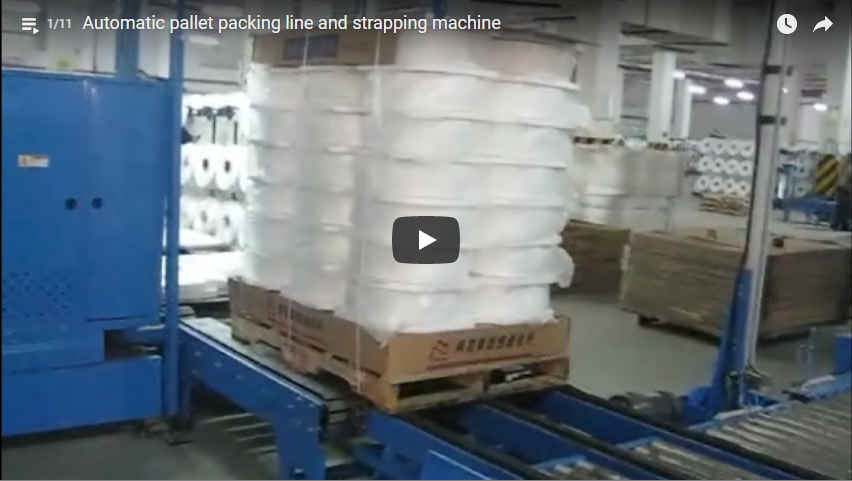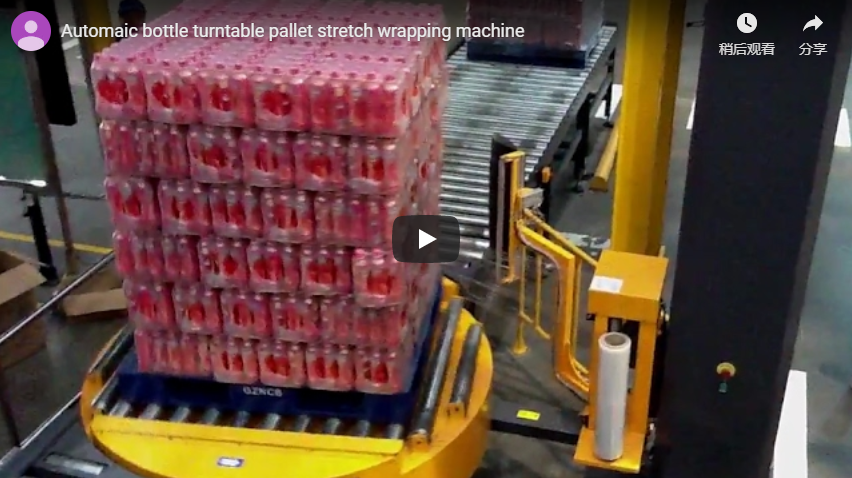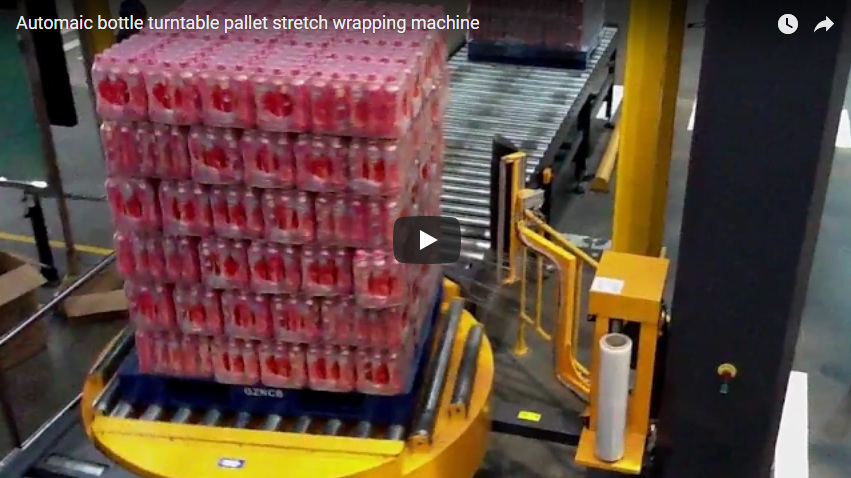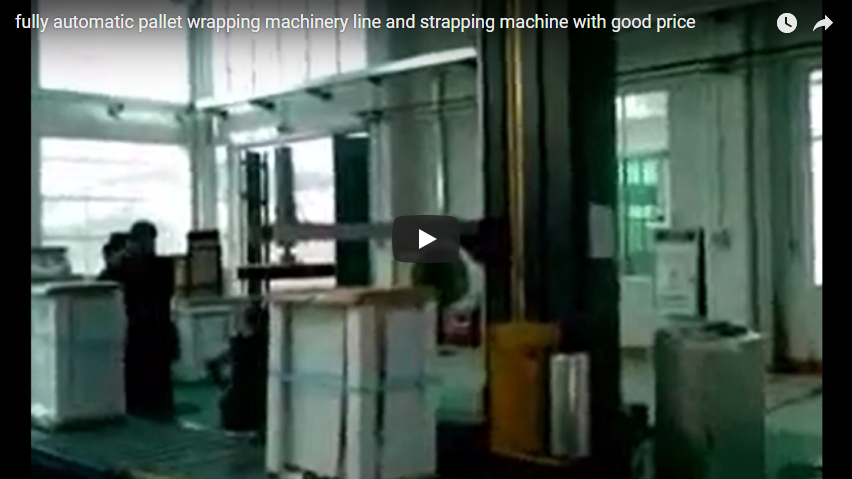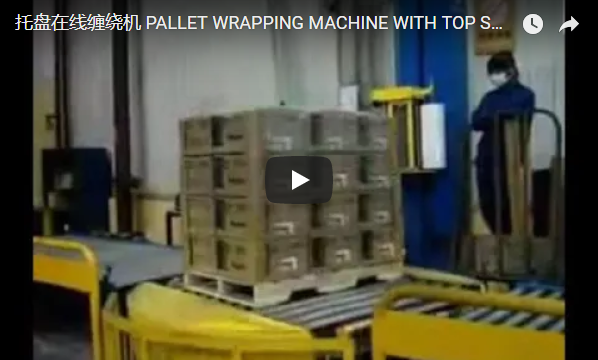Streamlining Pallet Wrapping: A Deep Dive into the M-Type Low-Profile Stretch Wrapper
In today's demanding logistics and manufacturing environments, efficient end-of-line packaging is crucial. For operations relying heavily on manual pallet jacks for material movement, traditional turntable stretch wrappers requiring forklift loading or ramps can present significant challenges. The M-Type low-profile pallet wrapping machine emerges as a specialized solution, engineered specifically to address this need, allowing direct loading via pallet jack and optimizing workflow efficiency. This article explores the design, technical specifications, operational benefits, and user experience of this innovative machine.
1. The Challenge: Ground-Level Loading and Workflow Integration
Many facilities, particularly those with space constraints, specific workflows, or where forklifts are not always available or practical for wrapping stations, face difficulties integrating standard stretch wrappers. Ramps consume valuable floor space and can be cumbersome, while forklift dependency creates bottlenecks if operators or equipment are tied up elsewhere. The need for a machine that seamlessly integrates with pallet jack operations – allowing operators to load, wrap, and unload pallets directly at floor level – is paramount for maintaining throughput and safety.
2. M-Type Design Philosophy: Structure and Accessibility
The defining characteristic of the M-Type wrapper is its turntable design. Unlike solid turntables, the M-Type features strategically placed cutouts, often resembling the letter "M" or "E", allowing the load wheels of a standard pallet jack to roll into the turntable area, placing the pallet securely onto the rotating platform without lifting.
- Robust Construction: Typically fabricated from heavy-gauge welded steel, the frame and mast are built for industrial durability, designed to withstand the rigors of daily use in busy warehouse or production settings.
- Low-Profile Turntable: The turntable sits exceptionally close to the floor (often around 3 inches or 75mm), eliminating the need for a loading ramp and facilitating direct pallet jack access. Precision bearings ensure smooth, stable rotation even under heavy loads.
- Mast Structure: The vertical mast guides the film carriage, ensuring consistent wrap application across the height of the pallet load. Mast heights are often available in standard and extended versions to accommodate varying load sizes.

qq图片20240708115531 3. Core Components and Functionality Breakdown
Understanding the key components reveals the machine's operational capabilities:
- Turntable Drive System: Usually employing a heavy-duty chain or belt drive connected to an AC motor with variable frequency drive (VFD), allowing precise control over rotation speed (typically adjustable from 3 to 12 RPM). Soft start/stop features prevent load shifting during cycle initiation and completion.
- Powered Pre-Stretch Film Carriage: This is critical for film efficiency and load security. Modern M-Type wrappers feature powered systems (often achieving 200-250% pre-stretch standard), stretching the film before it's applied to the load. This significantly reduces film consumption (by 50% or more compared to hand wrapping or basic wrappers) and increases load containment force. Film tension control is usually electronic and adjustable.
- Control Panel: Often features a user-friendly PLC (Programmable Logic Controller) with an HMI (Human Machine Interface) touchscreen or button panel. This allows operators to:
- Select pre-programmed wrap cycles (e.g., top/bottom wraps, cycle counts).
- Adjust parameters like turntable speed, carriage speed (up/down), film tension, and pre-stretch levels.
- Store custom wrap recipes for different load types.
- View diagnostics and operational status.
- Film Carriage Elevator: Driven by a separate AC motor, ensuring smooth vertical movement along the mast. Photo-eye sensors automatically detect the top of the load for consistent wrapping without operator intervention.
4. Technical Specifications Overview
While exact specifications vary by manufacturer and model, typical ranges for M-Type wrappers include:
- Turntable Diameter: 1500mm (59") to 1650mm (65") commonly.
- Maximum Load Weight Capacity: 1500 kg (3300 lbs) to 2000 kg (4400 lbs).
- Maximum Load Height: Standard 2000mm (78") to 2400mm (94"), with extended mast options available.
- Turntable Speed: Variable, typically 3-12 RPM.
- Film Pre-Stretch: Powered, typically fixed or variable up to 250% (higher options may exist).
- Film Type: Designed for standard LLDPE machine stretch film (e.g., 20-30 inch width, various gauges).
- Power Requirements: Often 110V/1Ph/60Hz or 220V/1Ph/50-60Hz, check specific model.
- Machine Footprint: Relatively compact due to the lack of a ramp, but allow clearance for pallet jack maneuvering.
- Loading Method: Manual Pallet Jack.
5. Operational Advantages and Efficiency Gains
Investing in an M-Type wrapper translates to tangible benefits:
- Enhanced Throughput: Eliminates delays associated with waiting for forklifts or navigating ramps. Direct pallet jack loading significantly speeds up the wrapping cycle.
- Improved Load Stability & Protection: Consistent, machine-applied tension and pre-stretch create a more secure, uniform wrap compared to manual methods, reducing product damage during transit.
- Significant Film Savings: Powered pre-stretch optimizes film usage, leading to lower consumable costs and a faster return on investment (ROI).
- Increased Worker Safety: Reduces the physical strain and potential injuries associated with manual wrapping (bending, twisting, walking backward). Creates a safer, more ergonomic workstation.
- Space Efficiency: The ramp-free design saves considerable floor space compared to traditional turntable wrappers requiring ramp access.
- Ease of Use: Modern controls are intuitive, requiring minimal training for operators to run cycles effectively.
6. Personal Use Experience and Workflow Integration
From an operator's perspective, the M-Type wrapper streamlines the process considerably. Loading involves simply positioning the pallet jack within the turntable cutouts and lowering the pallet. The control panel allows quick selection of the appropriate wrap cycle. Photo-eye sensors automate height detection, minimizing setup time.
Maintenance typically involves routine checks of drive chains/belts, sensor cleaning, and ensuring the film carriage rollers are free of debris. Integration into a workflow is seamless where pallet jacks are the primary mode of transport to and from the wrapping station. Consider placement that allows easy ingress and egress for pallet jacks without obstructing other traffic flow. Training usually focuses on control panel navigation, film loading, and basic troubleshooting.
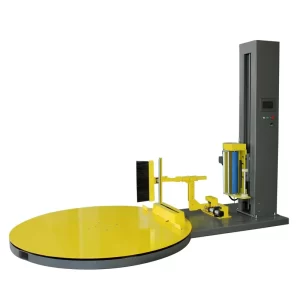
7. Optimizing Your Setup: Standard vs. Optional Features
While the standard M-Type configuration offers significant advantages, consider optional upgrades based on specific needs:
- Automatic Film Cut and Clamp: A highly popular option. At the end of the cycle, the machine automatically cuts the film and secures the tail to the pallet, eliminating the need for the operator to do this manually. This further speeds up the process and improves efficiency, especially in higher volume operations.
- Integrated Weigh Scale: Combines wrapping and weighing into a single step, useful for LTL shipping or internal tracking.
- Top Platen: A pneumatic device that descends onto the top of unstable or light loads to provide stabilization during rotation.
- Roping Device: Narrows the film into a rope for increased load containment at specific points.
8. Conclusion: A Smart Solution for Pallet Jack Centric Operations
The M-Type low-profile pallet wrapping machine represents a targeted engineering solution for facilities prioritizing pallet jack accessibility. By eliminating the need for ramps or forklifts at the wrapping station, it directly addresses common workflow bottlenecks, enhances operator safety, improves load security, and drives down packaging costs through efficient film usage. For any operation moving palletized goods primarily with pallet jacks, evaluating the integration of an M-Type stretch wrapper is a strategic step towards optimizing end-of-line packaging efficiency and achieving a safer, more productive work environment.

